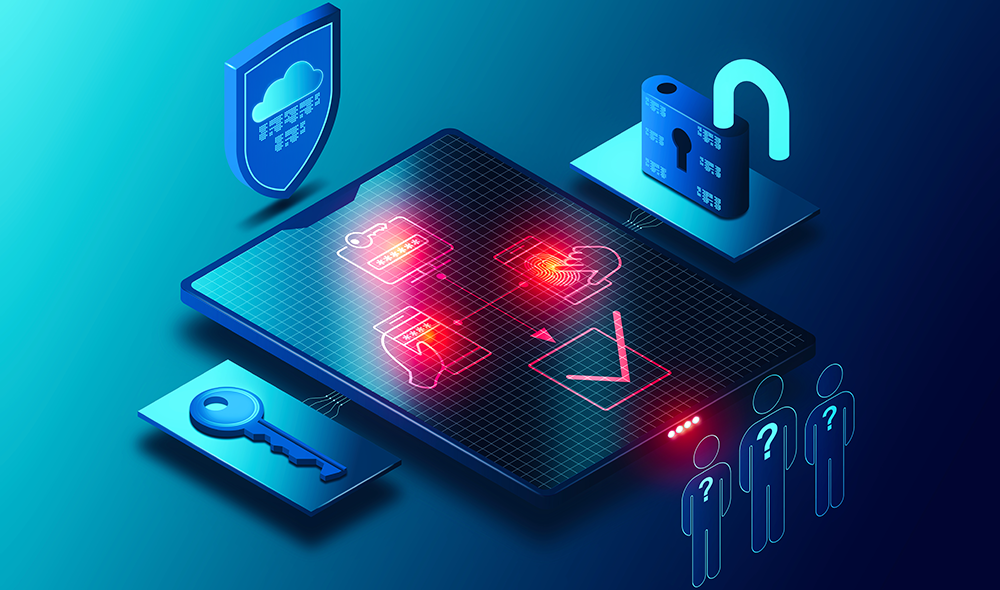MFA technology is rapidly evolving, are mandates next?

MFA (Multi-Factor Authentication) technology has become an essential component in safeguarding sensitive information and preventing unauthorized access. As technology advances, MFA solutions continue to evolve, incorporating innovative features that enhance security and mitigate potential risks. This article explores the rapid evolution of MFA technology and delves into the possibility of mandates for its implementation.
Understanding MFA Technology
MFA technology provides an additional layer of security by requiring users to authenticate their identity using multiple factors. These factors typically include something the user knows (e.g., password), something the user has (e.g., smartphone or security token), or something the user is (e.g., fingerprint or facial recognition).
Benefits of MFA Technology
Enhanced Security
MFA technology significantly enhances security by adding multiple layers of authentication. By combining different factors, such as passwords, biometrics, or physical tokens, the risk of unauthorized access is significantly reduced. Even if one factor is compromised, the additional layers provide an extra barrier of protection.
Protection against Unauthorized Access
With MFA in place, even if an attacker manages to obtain a user’s password, they would still need access to the additional authentication factors. This makes it extremely difficult for unauthorized individuals to gain entry to protected systems or accounts.
Mitigation of Credential Theft
MFA technology helps mitigate the risks associated with password-based attacks, such as phishing or credential theft. Even if a user unwittingly provides their password to an attacker, the absence of the additional authentication factors prevents the attacker from successfully accessing the account.
Evolution of MFA Technology
MFA technology continues to evolve, incorporating advanced features and capabilities to meet the ever-changing security landscape. Some notable advancements include:
Biometric Authentication
Biometric authentication leverages unique physical characteristics, such as fingerprints, iris patterns, or facial recognition, to verify a user’s identity. This approach offers enhanced security and convenience, as it is difficult to replicate or forge biometric data.
Behavioral Analysis
Behavioral analysis utilizes machine learning algorithms to analyze user behavior patterns, such as keystroke dynamics or mouse movements, to determine the authenticity of the user. This method adds an additional layer of security without requiring any additional hardware.
Contextual Authentication
Contextual authentication takes into account various contextual factors, such as the user’s location, device, or network, to assess the legitimacy of the authentication request. By analyzing these contextual elements, the system can make more informed decisions about granting access.
Adaptive Authentication
Adaptive authentication dynamically adjusts the level of authentication required based on the assessed risk. By continuously evaluating risk factors, such as user behavior or the sensitivity of the accessed resources, adaptive authentication ensures a balance between security and user experience.
Machine Learning and Artificial Intelligence
Machine learning and artificial intelligence are increasingly utilized in MFA systems to improve accuracy and efficiency. These technologies enable systems to learn and adapt to emerging threats, making authentication processes more robust and reliable.
Current Challenges in MFA Implementation
While MFA technology offers numerous benefits, there are still challenges associated with its implementation:
User Experience
Ensuring a seamless user experience is crucial for widespread MFA adoption. Complicated or time-consuming authentication processes can lead to user frustration and resistance. Balancing security measures with user convenience is a critical consideration for successful MFA implementation.
Integration Complexity
Integrating MFA technology into existing systems can be complex, especially for organizations with legacy infrastructure. Compatibility issues, system dependencies, and technical complexities may arise during the implementation process. Organizations need to plan and execute integration strategies effectively.
Cost Considerations
Implementing MFA technology may involve upfront costs for acquiring hardware, software licenses, and infrastructure upgrades. Ongoing maintenance and support expenses should also be considered. Small businesses, in particular, may face financial constraints when adopting MFA solutions.
Potential Mandates for MFA Implementation
The increasing importance of data security and privacy has led to discussions about potential mandates for MFA implementation. Several factors could drive the need for mandates:
Regulatory Compliance
Government regulations and industry-specific compliance standards may require organizations to implement specific security measures, including MFA. Compliance mandates aim to protect sensitive data, prevent data breaches, and ensure the privacy of individuals.
Industry Standards
Industry organizations and associations may establish standards that recommend or mandate the use of MFA technology. These standards help create a unified approach to security across the industry, ensuring consistency and interoperability between systems and organizations.
Consumer Demand
Growing concerns about data privacy and security have made consumers more aware of the need for robust authentication measures. Consumer demand for increased security and privacy may push organizations to implement MFA as a competitive advantage or to meet customer expectations.
The Impact of Mandates on MFA Adoption
The introduction of mandates for MFA implementation would have several impacts on organizations and the overall security landscape:
Increased Security Measures
Mandates would result in a broader adoption of MFA technology, enhancing security across various industries. Organizations would be compelled to implement robust authentication measures, making it harder for attackers to breach systems or access sensitive information.
Standardization of MFA Implementation
Mandates would drive standardization in MFA implementation practices. This would help establish consistent security protocols and interoperability between systems, facilitating secure collaboration and data exchange between organizations.
Pushing Innovation and Advancements
Mandates for MFA implementation would drive innovation and advancements in authentication technologies. Organizations and technology providers would be incentivized to develop more secure, user-friendly, and cost-effective MFA solutions to meet the growing demands of the market.
MFA technology is rapidly evolving to meet the increasing demands of the digital landscape. Its multifaceted authentication approach provides enhanced security and mitigates risks associated with unauthorized access. While mandates for MFA implementation are not yet widespread, they have the potential to further strengthen security measures, standardize implementation practices, and drive innovation in the field. Embracing MFA technology can help organizations stay ahead in the ever-changing landscape of cybersecurity.



